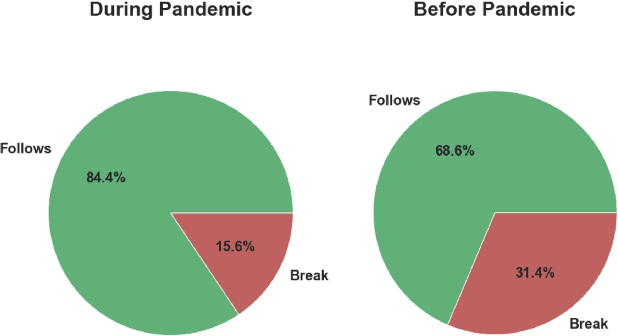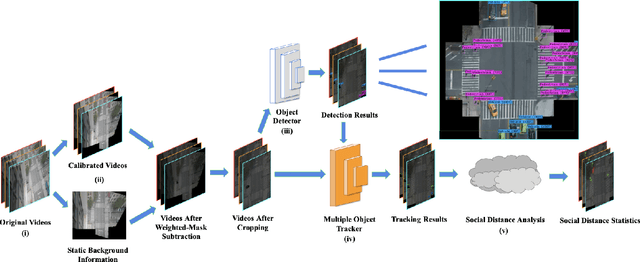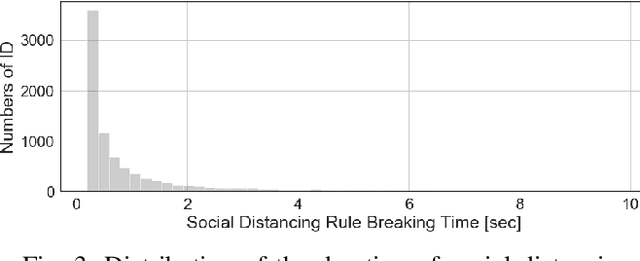Zihao Xiong
Birds Eye View Social Distancing Analysis System
Dec 14, 2021



Abstract:Social distancing can reduce the infection rates in respiratory pandemics such as COVID-19. Traffic intersections are particularly suitable for monitoring and evaluation of social distancing behavior in metropolises. We propose and evaluate a privacy-preserving social distancing analysis system (B-SDA), which uses bird's-eye view video recordings of pedestrians who cross traffic intersections. We devise algorithms for video pre-processing, object detection and tracking which are rooted in the known computer-vision and deep learning techniques, but modified to address the problem of detecting very small objects/pedestrians captured by a highly elevated camera. We propose a method for incorporating pedestrian grouping for detection of social distancing violations. B-SDA is used to compare pedestrian behavior based on pre-pandemic and pandemic videos in a major metropolitan area. The accomplished pedestrian detection performance is $63.0\%$ $AP_{50}$ and the tracking performance is $47.6\%$ MOTA. The social distancing violation rate of $15.6\%$ during the pandemic is notably lower than $31.4\%$ pre-pandemic baseline, indicating that pedestrians followed CDC-prescribed social distancing recommendations. The proposed system is suitable for deployment in real-world applications.
Electric field measurements made on a robotic platform
Jun 01, 2021



Abstract:This presentation reports the first known data from a field mill mounted on a ground-based robotic platform. The robot's motor and electrostatic charging of its wheels do not perturb the field mill data, and electric field varies smoothly whilst the robot is moving. Test measurements under a charged polystyrene plate are reduced in variability by a factor of 2 compared to a hand-held field mill. This technology has potential for autonomous measurements in inaccessible or hazardous environments.
 Add to Chrome
Add to Chrome Add to Firefox
Add to Firefox Add to Edge
Add to Edge